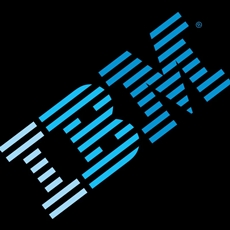IBM announces new blockchain tech for cross-border banking
16 Oct 2017
IBM has teamed up Stellar, a Silicon Valley-based non-profit organisation that supports the Stellar network, a free, open-source network, founded by cryptocurrency luminary Jed McCaleb and currency exchange service KlickEx, to launch a regional cross-border payments system based in the Pacific region.
 IBM and Stellar is now helping a network of banks use blockchain technology and software for moving digital currency across borders throughout the South Pacific, according to a report in the Fortune magazine.
IBM and Stellar is now helping a network of banks use blockchain technology and software for moving digital currency across borders throughout the South Pacific, according to a report in the Fortune magazine.
IBM said that merchants and consumers will be able to send money to another country in near real-time, accelerating a payments process that typically takes days.
The banking network includes ''12 currency corridors'' that encompass Australia and New Zealand, as well as smaller countries like Fiji and Tonga. It will reportedly process up to 60 per cent of all cross-border payments in the South Pacific's retail foreign exchange corridors by early next year.
The news also comes as an important validation of blockchain technology, which has long promised enormous efficiencies for the financial sector, but has been slow to move from the concept stage to the real world.
Blockchain, which relies on a disparate network of computers to create an indelible, tamper-proof record of transactions, is most famously associated with the digital currency bitcoin. But it can be used in many other applications such as tracking shipments or, as in this case, to record a series of cross-border transactions.
As an example, IBM said a farmer in Samoa will soon be able to contract with a buyer in Indonesia, and use the blockchain to record everything from the farmer's collateral to letters of credit to payment.
''This is the next step in the evolution of blockchain technology. It's live money moving around a network,'' Jesse Lund, IBM's VP of Blockchain, told Fortune.
However, for the new blockchain technology, banks will have to rely on bit-coin like digital currency, called Lumens, at least in the initial phase, to facilitate cross-border payments.
Currently, banks arrange such payments by maintaining foreign accounts in a local currency (so-called nostro accounts), and then debiting the accounts as required-a process that is both slow and ties up capital.
Under the new blockchain arrangement, banks will conduct the transactions using Lumens, and then rely on local market makers to convert the Lumens into local fiat currency.
The Lumens or the other new digital currencies would virtually emerge as the international medium of exchange, replacing current globak currencies like the dollar and the euro.
Both Stellar and IBM are part of a project called Hyperledger Fabric, which is building open source blockchain tools to support payment infrastructures.
The report citing experts said the banks use of Stellar's digital currency is likely to be temporary as central banks will begin issuing digital currencies of their own, and that these become integral to blockchain-based money transfers.
A number of banks including BBVA, Bank Danamon Indonesia, and Mizuho Financial Group, are included in the development stage, according to the report.






























